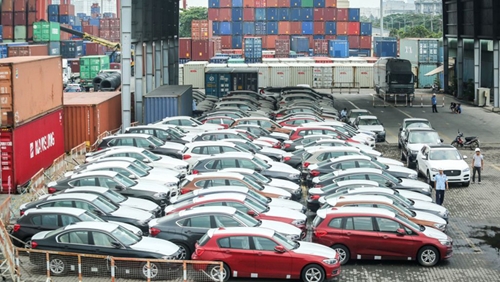Accordingly, Thailand, Indonesia, and China were the biggest car suppliers to Vietnam. Specifically, Thailand took the lead with 50,144 units, equivalent to over 1.07 billion USD, down 18% in volume and 22% decrease in value year on year.
In second position was Indonesia with 40,474 units worth over 574 million USD, showing an annual decrease of 36.7% in volume and 38% in value.
    |
 |
|
Hundreds of imported BMW cars at Saigon Port in Ho Chi Minh City (Photo courtesy of Financial Magazine) |
China was the third largest car supplier to Vietnam during the period, with 9,843 units valued at over 360 million USD, representing a drop of 39% in volume and a 46% in value compared to the same period last year.
Additionally, Vietnam also imported completely built-up cars from the US, Germany, Japan, the Republic of Korea, France, and others.
In November alone, the number of completely built-up cars imported into Vietnam reached 7,508, equivalent to 192.81 million USD, falling 21.9% and 24.3% in volume and value month-on-month, respectively.
According to the Vietnam Automobile Manufacturers’ Association (VAMA), the total sales of VAMA member units reached 263,249 as of the late November, down 29% annually. Of them, passenger, commercial and special-use vehicles down 31%, 16% and 57%, respectively.
This year, the Vietnamese automobile market is forecast to fall short of the volume of over 404,000 sold in 2022, mostly due to current challenging conditions, leading consumers tightening their belts.
Source: VNA